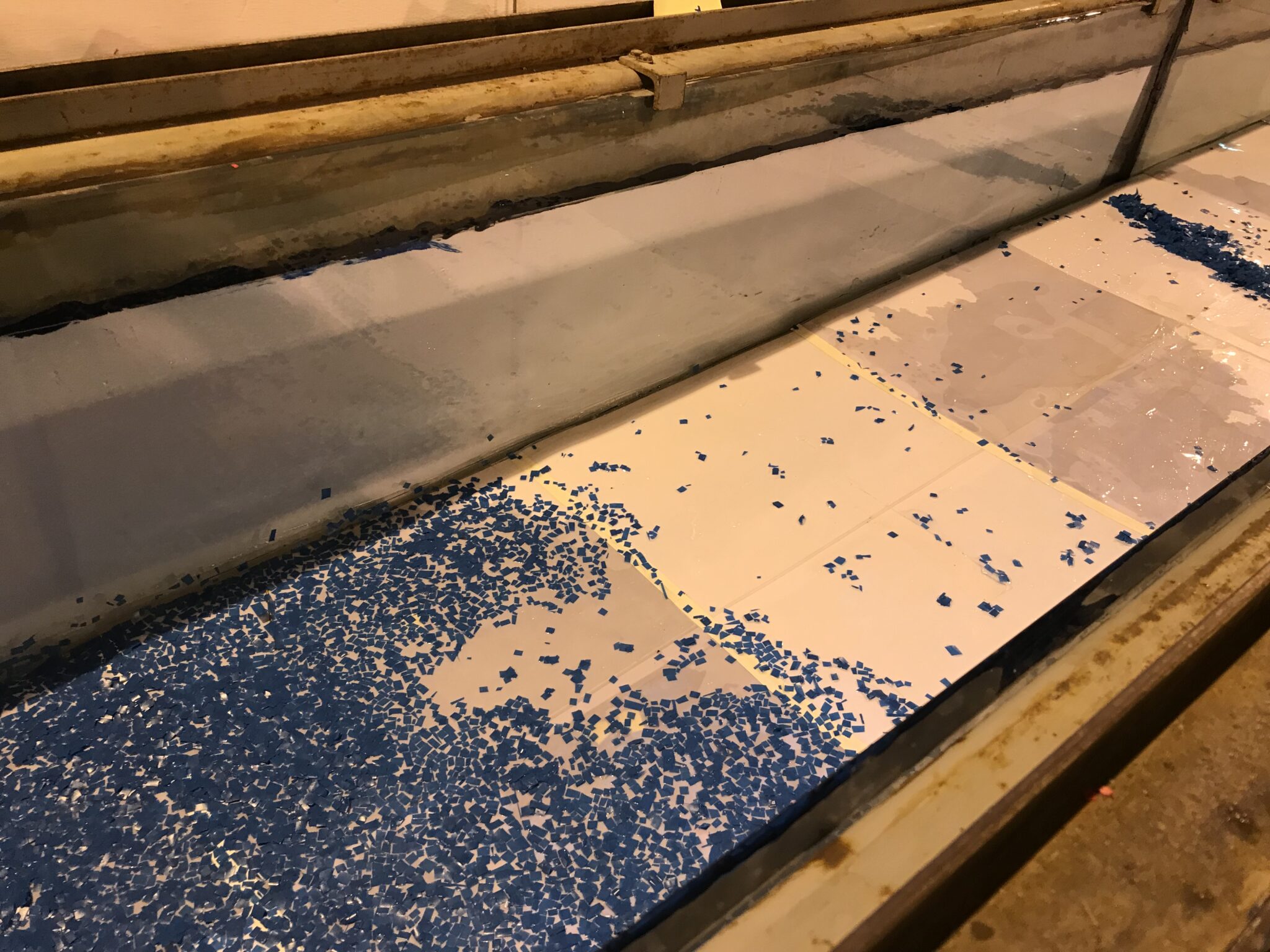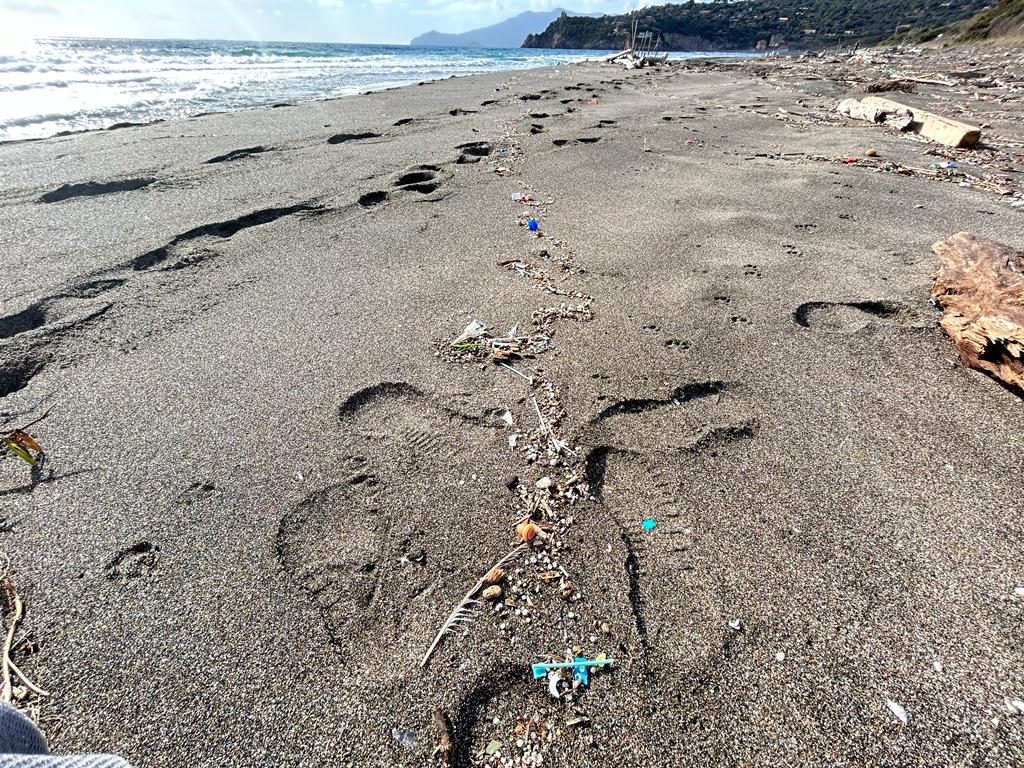IHCantabria explains why pellets dumped off the coast of Portugal reached the beaches of northern Spain and how these plastics behave in the sea
Based on its experience in previous research, IHCantabria contributes to the understanding of the factors that influence the path of the pellets that are reaching the beaches of northern Spain and their behavior in the sea over time
During the last few weeks, dozens of coastal communities have been able to see how a “white tide” of pellets has gradually reached their coasts, which has generated several questions, such as why something that was dumped off the coast of Portugal has ended up on the beaches of Cantabria and what can happen to the plastic in the sea over time. These and other questions are answered by the researchers of the Institute of Environmental Hydraulics of the Universidad de Cantabria (IHCantabria), Ana Julia Abascal Santillana y Paula Nuñez Perez, based on their knowledge and experiences in tests that analyze the trajectory and behavior of plastics, such as pellets, in the sea.
Contamination from accidental spills is a problem that affects many coasts. Any dumping at sea, as in the case of pellets, will be displaced from its place of origin and will move due to the effect of sea currents and wind. Once at sea, the pellet spill can be dispersed, depending on the wind and current conditions characteristic of the area and the time of year; therefore, “a determining factor is whether the spill occurs in winter or summer, because then wind and current patterns have an influence. This means that a spill that occurs off the coast of Portugal may end up moving away from the source, entering the Bay of Biscay and reaching the Cantabrian coast”. This is explained by researcher Ana Julia Abascal Santillana.
In her opinion, the marine and atmospheric conditions, characteristic of the winter season and the previous experience during the Prestige accident, indicate that there is a considerable probability that a pellet spill originating in Portuguese waters could enter the Bay of Biscay and reach the coast of Cantabria.
The activation of the state of emergency in Cantabria reflects the relevance of the problem. Research by the IHCantabria team, in collaboration with the Universities of Genoa and Roma Trè, allows a better understanding of the behavior of plastics in the sea, focusing on two important factors: the effect of waves and biofouling.
To analyze the “biofouling effect” requires studying the growth of marine organisms on the surface of plastics under different environmental conditions, which allows understanding how these colonies can affect the buoyancy and behavior of the waste in the sea. This critical aspect has been experimentally evaluated in IHCantabria. “We have studied how microorganisms and algae colonize plastics under different exposure conditions (temperature and salinity) and how these organisms alter the buoyancy of plastics, this being a critical aspect that can condition the trajectories that these wastes will follow in the sea. Understanding how biofouling modifies the buoyancy of plastics is essential to be able to anticipate their drift behavior,” explains researcher Paula Nuñez Perez.
Based on her tests, developed in the wave channel of the University of Cantabria, Paula Nuñez has evaluated the influence of waves on the mobility of plastics, observing their response to different conditions and how these wastes arrived and accumulated on the beaches. These tests should not be understood as isolated experiments, but as efforts aimed at improving the predictive capability of numerical plastic transport models. “By integrating the results of our studies, we can refine models that help us predict more accurately the areas of our beaches that will be most exposed to plastic accumulation. This strategic information will allow us to identify priority areas for action, thus contributing to the effective management of marine plastic debris,” clarifies Nuñez.
Research such as that being developed at IHCantabria not only illuminates the impact of wave and biofouling on plastics, but also provides valuable data to actively address the challenges of coastal plastic pollution. These are fundamental steps to protect our ecosystems and to guarantee the sustainability of our beaches in the medium and long term.
In summary, “in order to simulate the behavior of pellets at sea, we need to know how it drifts and disperses, depending on the wind and currents, how it is transformed on the way to the coast, and how it behaves on the beach (for example, the resuspension of the pellets and the possibility that they return to the sea due to the effect of waves and other dynamics). From IHCantabria we are investigating all these aspects, with the aim of improving the models and tools that exist today to know and predict the behavior of pellets in the sea and on the coast, and finally provide information as useful as possible to help in decision making,” concludes Ana Julia Abascal.
Facts about the plastic spill accident
Pellets are tiny balls of plastic used to make common products – such as plastic bottles – that are less than 5 mm wide, which is making them difficult to collect on the beaches where they have washed up.
The pellet spill off the coast of Portugal occurred on December 8, after the cargo ship Toconao lost six containers, at least one containing plastic pellets, 80 kilometers off the coast of Viana do Castelo (Portugal). In the weeks following the spill, pellets began to arrive on the beaches of northwest Spain, especially in Galicia, Asturias and Cantabria.
The growing plastics crisis reminds local communities of Spain’s worst environmental disaster in 2002, when the tanker Prestige broke up off the coast of Galicia, spilling more than 60,000 tons of heavy fuel oil along the coast of that region. As they did more than 20 years ago, these days dozens of volunteers have been combing sand and sifting water to find these plastic granules.

Test results developed at IHCantabria not only provide insight into the impact of wave and biofouling on plastics, but also provide valuable data to actively address the challenges of coastal plastic pollution

To simulate the behavior of pellets at sea, it is necessary to know how they drift and disperse, depending on the wind and currents, how they are transformed during their journey towards the coast and how they behave on the beach



